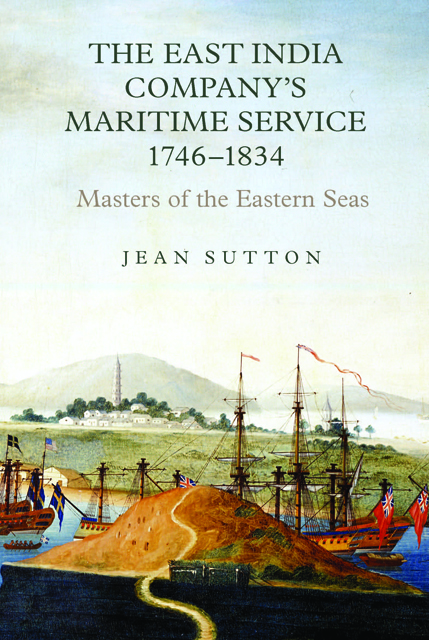Book contents
- Frontmatter
- Contents
- List of Illustrations: plates and maps
- Dedication
- Preface
- Larkins Family Tree
- Introduction
- Part I In the Company’s Service
- Part II William Larkins, Commander and Managing Owner
- Part III Thomas Larkins, Commander and Managing Owner
- Part IV John Pascall Larkins, Esq., Managing Owner
- Part V The New World Disorder
- Conclusion
- Appendix I
- Appendix II
- Bibliography
- Glossary
- Index
10 - Competition and Conflict
Published online by Cambridge University Press: 18 February 2023
- Frontmatter
- Contents
- List of Illustrations: plates and maps
- Dedication
- Preface
- Larkins Family Tree
- Introduction
- Part I In the Company’s Service
- Part II William Larkins, Commander and Managing Owner
- Part III Thomas Larkins, Commander and Managing Owner
- Part IV John Pascall Larkins, Esq., Managing Owner
- Part V The New World Disorder
- Conclusion
- Appendix I
- Appendix II
- Bibliography
- Glossary
- Index
Summary
JOHN'S RESPONSIBILITIES were wide-ranging. William was an invalid, with slender financial resources, though the Bengal government's repeated recommendations in his favour persuaded the Court to reward his efforts and enable him to live comfortably in West Grove, Blackheath, near the rest of the family. Susannah now looked to John to help those of her children who wanted a career in the service and his own wife's kinsmen, John Brook Samson and Henry Morse Samson, depended on him to advance their careers. Everything depended on John's continuing the successful management of the family's ships. His first task was to apply for permission to build on Royal Admiral's bottom, although she was employed as a dismantled ship on her seventh voyage fetching saltpetre and sugar from Bengal.
Since the drastic reduction of duties on tea, imports had increased year on year. For several years everyone concerned in the provision of shipping had been locked in a debate on the most appropriate size of ships to provide for this new development. Most of the owners, builders and suppliers defended the status quo while David Scott wanted to see a large fleet of small ships of about 500 tons. Gabriel Snodgrass favoured larger ships on grounds of economy and conservation of timber, and the few large ships hired by the Company in 1786 had strengthened his case: they had brought home twice as much tea as an 800 ton ship. With the commencement of war early in 1793 government lent support to those favouring large ships which could be converted to men of war and in the autumn the Court came to a decision. Sixteen ships from 700 to 800 tons and one of 1200 were needed annually from India, fifteen large ships of about 1200 tons from China. The fleet should in future comprise two and a quarter sets of the larger size, or thirty-six ships; and two and a half sets of the smaller, or 40 ships. Extra, smaller ships were to be taken up for single voyages as required to make up tonnage. The general feeling in the Court was that even larger ships were needed for the China trade to ensure that they could bring back any surplus cargo.
- Type
- Chapter
- Information
- The East India Company's Maritime Service, 1746-1834Masters of the Eastern Seas, pp. 189 - 206Publisher: Boydell & BrewerPrint publication year: 2010

